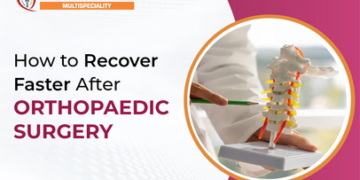Root Canal Therapy for a Dead Tooth: Restoring Life to an Ailing Smile
Understanding Root Canal Therapy
Root canal therapy, also known as endodontic treatment, is a dental procedure performed to save a severely decayed, infected, or damaged Dead Tooth.When a tooth’s dental pulp becomes infected or dies, usually due to deep decay or trauma, it can lead to significant pain and oral health issues. Root canal therapy aims to eliminate the infection, relieve pain, and restore the tooth’s functionality.
The Root Canal Therapy Process:
- Examination and Diagnosis: The first step in root canal therapy is a comprehensive dental examination. Your dentist will evaluate the affected tooth, assess the severity of the condition, and determine whether root canal therapy is necessary. This may involve visual inspection, dental X-rays, or additional tests.
- Local Anesthesia: Before the procedure begins, a local anesthetic is administered to numb the tooth and surrounding tissues. This ensures that you remain comfortable throughout the treatment.
- Accessing the Tooth: To reach the dental pulp, your dentist will create a small opening in the top of the tooth. It is possible to remove contaminated or dead pulp using this entry point.
- Removing Infected Pulp: Specialized dental instruments, including small files, are used to carefully remove the infected or necrotic dental pulp from the inside of the tooth and its root canals. The canals are shaped and cleaned to ensure thorough removal of all infected material.
- Disinfection and Medication: After the canals are cleaned, they are disinfected to eliminate any remaining bacteria. In some cases, a medicated filling may be placed inside the canals to help fight infection and promote healing.
- This material seals the canals and prevents reinfection.
- Restorative Step: Depending on the extent of the tooth’s damage, a dental crown may be recommended to protect and strengthen the treated tooth. A dental crown is a custom-made restoration that fits over the remaining tooth structure, providing strength, stability, and a natural appearance.
Benefits of Root Canal Therapy
Root canal therapy offers several benefits for individuals with a dead tooth:
- Pain Relief: Root canal therapy eliminates the source of tooth pain by removing infected or dead pulp, providing significant relief.
- Preservation of Natural Tooth: Rather than opting for extraction, root canal therapy allows you to preserve your natural tooth, maintaining the integrity of your smile.
- Restored Function: By addressing the infection and strengthening the tooth, root canal therapy restores the tooth’s functionality, allowing you to chew and speak comfortably.
- Aesthetics: Following root canal therapy, a dental crown can be placed, enhancing the appearance of the treated tooth and blending seamlessly with your natural teeth.
- Preventing Further Complications: Root canal therapy prevents the spread of infection to surrounding teeth and tissues, reducing the risk of more extensive oral health problems.
Extraction of a Dead Tooth: Understanding the Necessity and Benefits
When is Extraction of a Dead Tooth Necessary?
- Extensive Decay: When a dead tooth is severely decayed and the damage has reached the tooth’s root or surrounding structures, extraction may be necessary. Decay that compromises the tooth’s structural integrity and affects neighboring teeth can pose a risk to overall oral health.
- Infection and Abscess: If a dead tooth becomes infected, it can lead to the development of a dental abscess. If the infection is severe, spreads to the surrounding gums, bone, or other teeth, extraction may be the best course of action to prevent further spread of infection.
- Gum Disease and Periodontal Issues: A dead tooth can contribute to the development or progression of gum disease, also known as periodontal disease. If the gum disease associated with the dead tooth becomes severe and affects the supporting tissues and bone, extraction may be necessary to preserve oral health.
- Failed Root Canal Treatment: In some cases, a dead tooth may have previously undergone root canal therapy but still remains problematic or continues to cause persistent infection or pain. If the initial root canal treatment fails to resolve the issue, extraction may be considered to prevent further complications.
- Trauma or Injury: A dead tooth that results from severe trauma or injury, such as a sports-related accident or a hard blow to the mouth, may require extraction if it cannot be salvaged through other dental procedures.
Benefits of Extraction
- Elimination of Pain and Discomfort: Extracting a dead tooth can alleviate persistent pain and discomfort caused by infection, decay, or other complications associated with the tooth.
- Prevention of Infection Spread: Removing a dead tooth helps prevent the spread of infection to neighboring teeth, gums, jawbone, and even the bloodstream, reducing the risk of further systemic complications.
- Preserving Oral Health: Extracting a dead tooth that poses a risk to surrounding oral structures can help preserve overall oral health. By removing a non-vital tooth, the potential for further decay, infection, and periodontal problems is minimized.
- Aesthetic Improvement: In cases where a dead tooth is visibly discolored or affects the appearance of the smile, extraction can improve aesthetics. Removing the dead tooth allows for replacement options that restore the natural beauty of the smile.
Replacement Options
After the extraction of a dead tooth, there are several replacement options to restore function and aesthetics:
- Dental Implants: Dental implants are a popular and long-lasting option for replacing a dead tooth. They involve surgically placing an implant into the jawbone, which serves as a stable foundation for a prosthetic tooth restoration.
- Dental Bridges: A dental bridge can be used to replace a dead tooth by using adjacent healthy teeth as support. The bridge consists of an artificial tooth, known as a pontic, that fills the gap left by the extracted tooth.
- Removable Dentures: In cases where multiple teeth, including the dead tooth, need to be replaced, removable dentures can be considered. Dentures are custom-made replacements for missing teeth and can restore functionality and aesthetics.
Summary
- “Root Canal Therapy for a Dead Tooth”: This article discusses how root canal therapy can save a dead tooth by removing infected pulp and preserving the natural tooth structure.
- “Extraction of a Dead Tooth: When is it Necessary?”: The article explores situations where extraction is necessary for a dead tooth and highlights the importance of considering alternatives and seeking professional advice.
- “Dental Implants as a Solution for a Dead Tooth”: This article explains how dental implants can serve as a long-term solution for replacing a dead tooth, providing a durable and natural-looking replacement.
- “Restorative Dentistry for a Dead Tooth”: The article emphasizes the importance of restorative dentistry in addressing dead teeth, covering treatments like dental fillings, root canal therapy, dental crowns, bridges, and implants.
- “Preventive Measures to Avoid Dead Teeth”: This article focuses on preventive measures to avoid dead teeth, including maintaining excellent oral hygiene, regular dental check-ups, protecting teeth during physical activities, addressing dental issues promptly, and staying educated about oral health.
- “Dental Care for a Healthy Smile and Avoiding Dead Teeth”: The article emphasizes the importance of consistent oral hygiene practices, regular dental check-ups, and preventive dentistry in maintaining a healthy smile while minimizing the risk of dead teeth. It covers topics such as brushing, flossing, rinsing with mouthwash, scheduling dental check-ups, and practicing preventive measures like fluoride treatments and healthy dietary habits.
Overall, these articles provide comprehensive information on various aspects of dental care, treatments, and preventive measures to address dead teeth, promote oral health, and maintain a beautiful smile. PLEASE VISIT HEALTH




































Discussion about this post